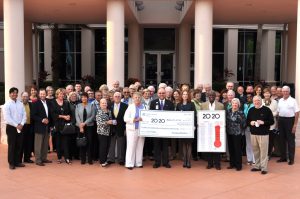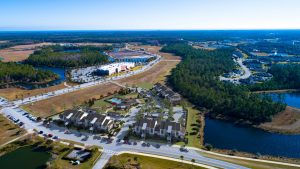Whether it’s called work from home, remote work or telecommuting, the ability to connect to anywhere from anywhere has changed the way businesses, governments and people shop, pay bills or do their jobs. And the experience of many during the Covid-19 pandemic put to rest once and for all the idea that remote workers were less efficient and effective than their office-bound colleagues. In fact, the number of telecommuting employees has risen dramatically over the past 15 years, rising 173 percent since 2005.
As technological innovation spreads deeper into a wider variety of industry sectors, it offers workers employment opportunities not tied to geography but to bandwidth. That has changed the demographics of work, allowing people to live wherever they want, and fostered the emergence of a new type of community, the zoom town.
Zoom towns are smaller cities experiencing rapid growth due to the rise of remote work. Many are small towns that offer a high quality of life with more affordable housing and economic benefits than large cities. And Palm Coast is one of them, according to Nick Klufas, a senior software engineer at ACI and a member of the Palm Coast City Council.
“I think Palm Coast is in the process of becoming a zoom town,” Klufas said. “I look at our opportunity very similar to Chattanooga. They are known as the ‘Gig City,’ because anywhere in the city they have availability for high-quality, low-cost bandwidth.”
Klufas said one advantage Palm Coast has is the city’s early commitment to digital infrastructure, starting back in 2004 with the creation of a fiber-optic network called FiberNet.
“Fiber is one of those pieces of infrastructure that is fundamental to enabling technology,” he said, adding the city’s return on the system has exceeded its investment.
“It’s critical to our economic resilience because broadband is the fundamental necessity to enable digital workers in the digital economy,” Klufas said.
While other cities are playing catch-up in the digital landscape, Palm Coast is looking to build upon its early start with a plan for the future.
In 2018 the city commissioned a study by consultant Magellan Advisors to review the status of the FiberNet system and make suggestions for future growth. The results confirmed Palm Coast is on the right path with its digital strategy.
“The future of cities is as much in bits and bytes – smart systems and software applications – as it is in physical infrastructure,” the report said. “Cities are increasingly recognizing that broadband is another utility, just like water, sewer, gas and power.”
In addition, the report said Palm Coast is “ideally positioned” to attract high-paying technology jobs “if it has advanced, world-class network services.”
Klufas said the Magellan report is “absolutely being used” to map out the city’s digital future and “shed a lot of light and took away a lot of the mystery of FiberNet.”
Among the options under consideration is the creation of a public/private partnership to expand the fiber-optic system.
“The appetite for investment in fiber is high right now,” Klufas said.
The opportunities new technologies and interconnectivity offers is also not lost on Michael Zaharios at the Florida Virtual Entrepreneur Center.
“That’s certainly one element of the puzzle, the infrastructure and the technology,” he said. “There is great benefit to having fiber or high-speed capabilities already in place.”
Zaharios said the sooner communities invest in digital infrastructure, the sooner they can benefit from the growth of remote work and it can also become part of how a community markets itself to business prospects and digital workers.
“There is no downside to going out and creating your own network,” he said, adding that the Covid-19 pandemic forced companies large and small to rethink their operations.
“It was coming, the trend was there,” Zaharios said of remote work opportunities. “All of a sudden with the pandemic we all had to do this and it moved remote working acceptance.”
Zaharios said beyond the idea of “zoom towns,” the broader region can also benefit from the influx of high-skilled, high-tech workers creating “zoom regions.”
“Anything is possible,” he said. “If you can align that vision with the folks that can become ambassadors for that, it certainly may be one theme or brand the region could use. I think it’s already here, to be honest.”
For Klufas, positioning Palm Coast as a zoom town destination with the FiberNet system offers an added bonus.
“It really gives us a great economic incentive tool to offer businesses an incentive to come here instead of cold, hard cash,” he said. “We do have a rare opportunity that not every municipality has that we can leverage before everyone catches up.”










